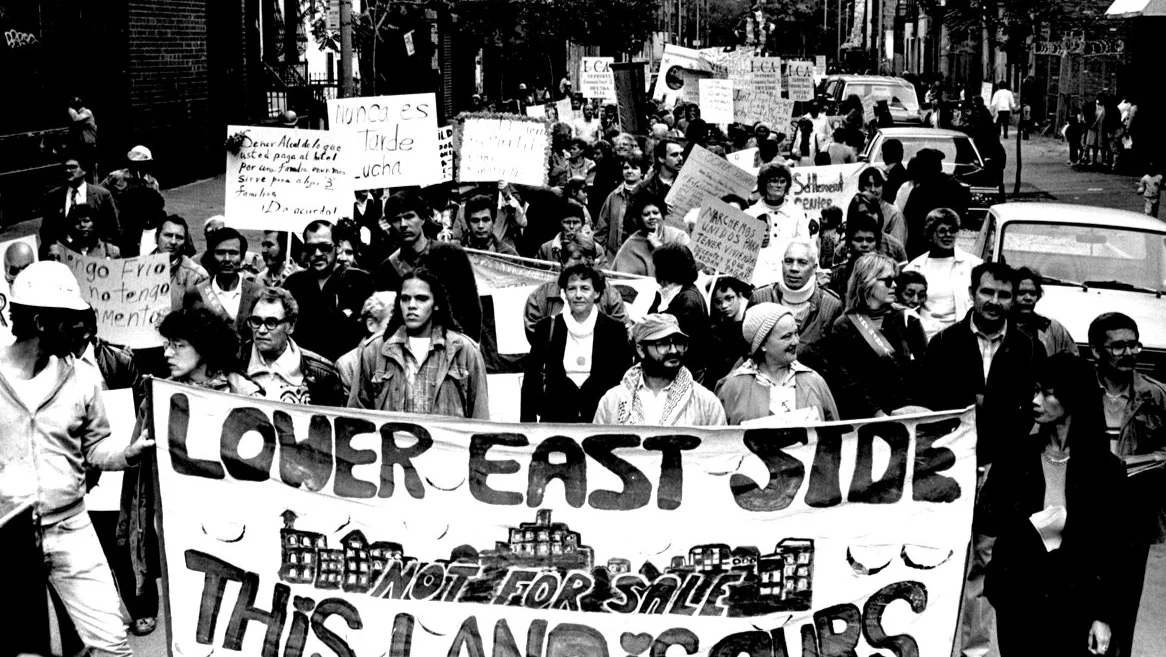
Clique aqui para Português
This is the latest in a series of articles about Community Land Trust (CLT) experiences around the world. We selected a few cases based on their potential to inspire others. These examples show how varied CLTs are despite always having the same basic structure: a nonprofit organization made up of residents owns the land in an area, while residents own or rent the homes themselves. Our objective is to present lessons learned from international experiences with CLTs, so we can reflect on how to reach the model’s greatest potential in Brazil and overcome challenges faced in other contexts. Here, we explore the experience of the Cooper Square Community Land Trust, a CLT located in Manhattan’s Lower East Side, in New York City. For those interested in learning more, on July 3, 2024, we will be hosting a talk by Cooper Square CLT Director Tom Angotti on Zoom in English and Portuguese: click here to sign up.
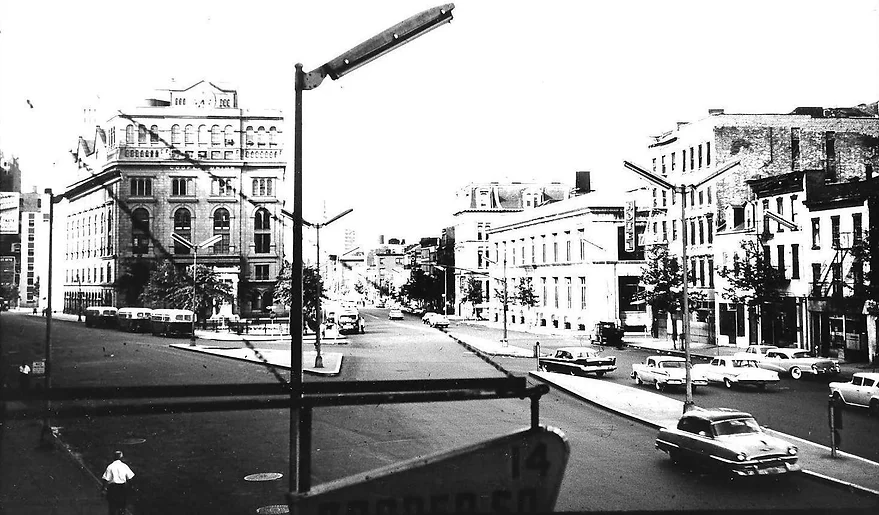
The history of residents’ struggles in Cooper Square dates back to the 1950s, during a time of major urban transformations in New York City. At the time, the city underwent various urban renewal projects, with areas inhabited by low-income residents, mostly Black and Puerto Rican neighborhoods, receiving massive investments in infrastructure after displacing existing residents. These projects served the interests of real estate developers, who would benefit from the neighborhoods’ appreciation. The result was often the forced displacement of the original population, largely low-income workers and immigrants, and its replacement by residents with higher socioeconomic status.
In 1959, a proposal was put forward by public authorities for the renewal of the Cooper Square neighborhood, which involved the demolition of eleven blocks. The original plan, devised by controversial urban planner Robert Moses, aimed to establish coops to own and manage the newly built units. However, criticism at the time suggested that these coops wouldn’t be accessible to a significant portion of the population living in the area. Local residents, predominantly low-income renters, realized the plan would force them out of the neighborhood. The increase in cost of living expected alongside public investments would lead to real estate speculation and, consequently, to the expulsion of residents.
In response to this measure, a group of residents, small business owners, artists and activists organized under the banner of the Cooper Square Committee (CSC), a grassroots organization that opposed the city’s plan. From the outset, participants began to discuss and develop their own plan for the urban renewal area, which included preserving existing housing and constructing new affordable housing for low-income families. After hundreds of community meetings, the Cooper Square Community Plan was launched in 1961. This was the city’s first truly grassroots initiative, breaking away from traditional urban planning led by government and its expert technicians, and placing residents at the heart of the debate. The Committee argued that the city should not be developed solely from the perspective of officials and urban planners. On the contrary, the population should have direct involvement in shaping the kind of city to be built.
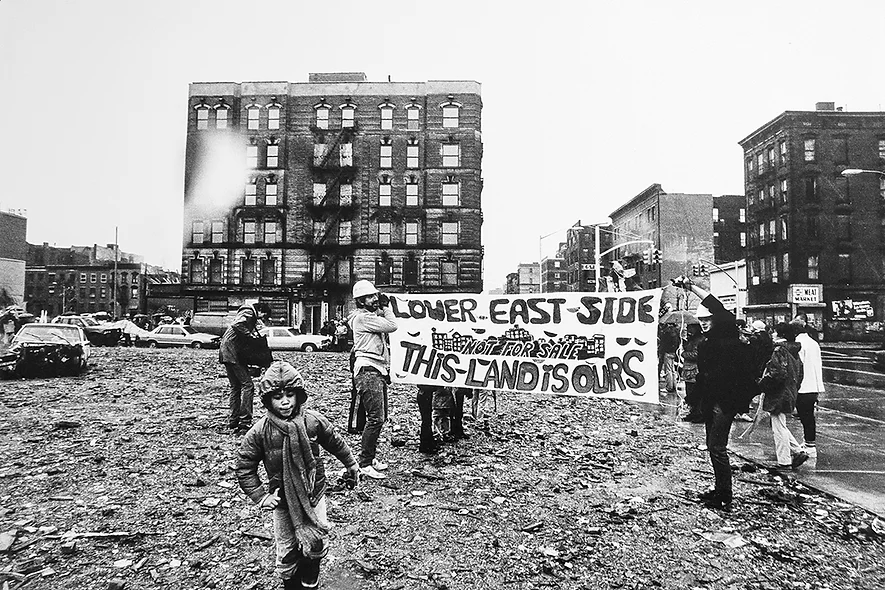
The Cooper Square Alternate Plan advocated for retaining residents, ensuring the permanence of original residents, minimizing planned demolitions, conducting unavoidable demolitions in stages, and prioritizing local tenants for new housing units. However, getting acceptance from public authorities was challenging. Activists involved in the Committee worked to highlight the damage caused by other urban renewal projects of the same nature, which had resulted in the displacement of thousands and exacerbated urban segregation. In 1971, a decade after the plan was first presented, a significant victory was achieved: the City officially approved the Cooper Square Community Plan. Unfortunately, delays in implementation persisted, primarily due to cutbacks in public spending on affordable housing in the United States.
The Cooper Square Community Land Trust (CSCLT) emerged from the organizing efforts in neighborhood planning and in resistance to a development project that failed to address residents’ needs. Officially established in 1994, the CSCLT acquired ownership of the land beneath the buildings outlined in the community plan. Its mission is to preserve and develop affordable housing, as well as community and cultural spaces, ensuring that Cooper Square remains racially, economically, and culturally diverse. The CLT was created in tandem with another organization, the Cooper Square Mutual Housing Association (MHA), a cooperative established to take ownership of the buildings—the structures themselves—which are then collectively managed by the MHA.
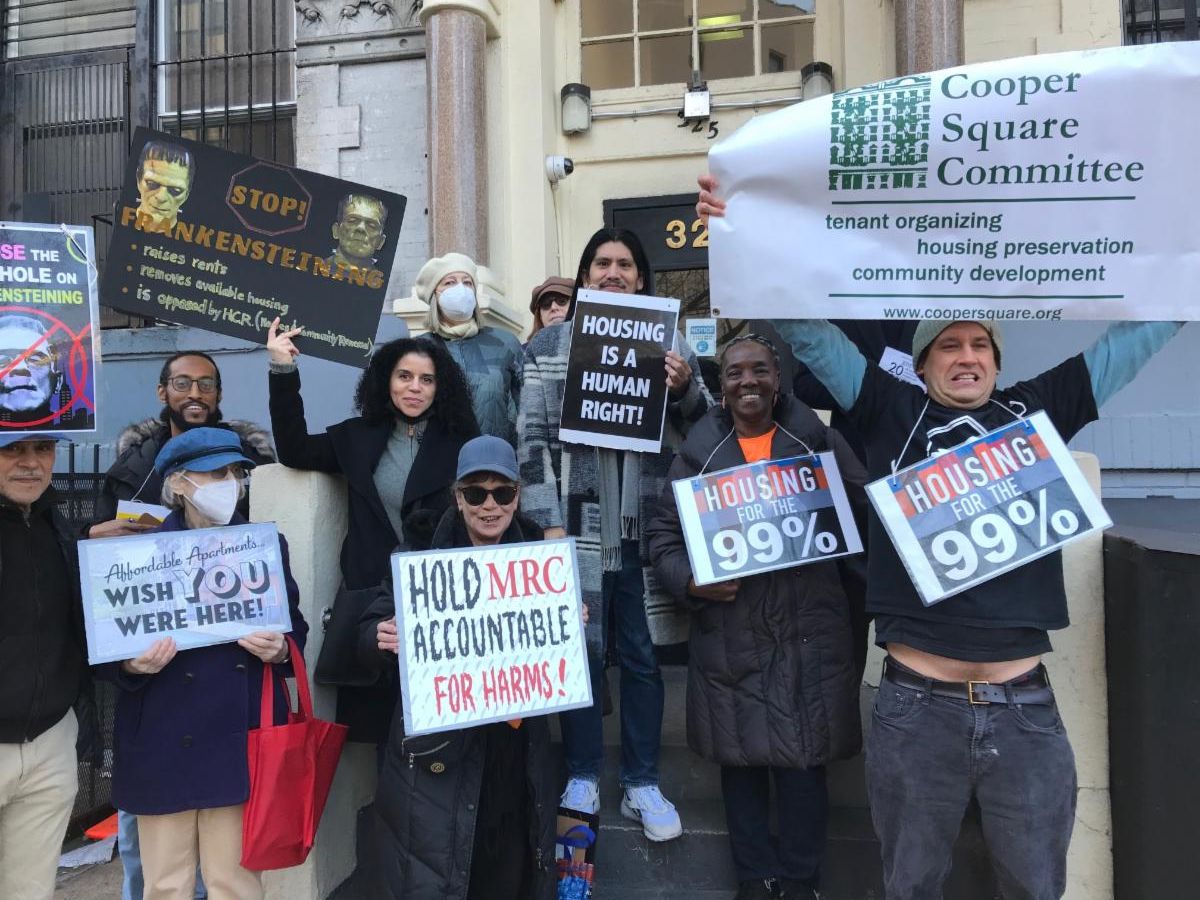
At the time of its creation, the MHA was tasked with managing 303 residential units and 23 commercial units across 19 buildings. Residents bought shares in the cooperative at affordable prices, ensuring their access to housing and the opportunity to build equity. Meanwhile, the Cooper Square CLT took ownership of the land on which these buildings were constructed, maintaining affordable housing for low-income residents. Its board of directors consists of one-third residents who live in the CLT housing units and two-thirds individuals who are either neighborhood residents or activist professionals. The model persists today: the land is owned by the CLT, while residents of individual housing units own shares in the MHA coop and make up the majority of the MHA governing board (the CLT appoints one third of the MHA governing board).
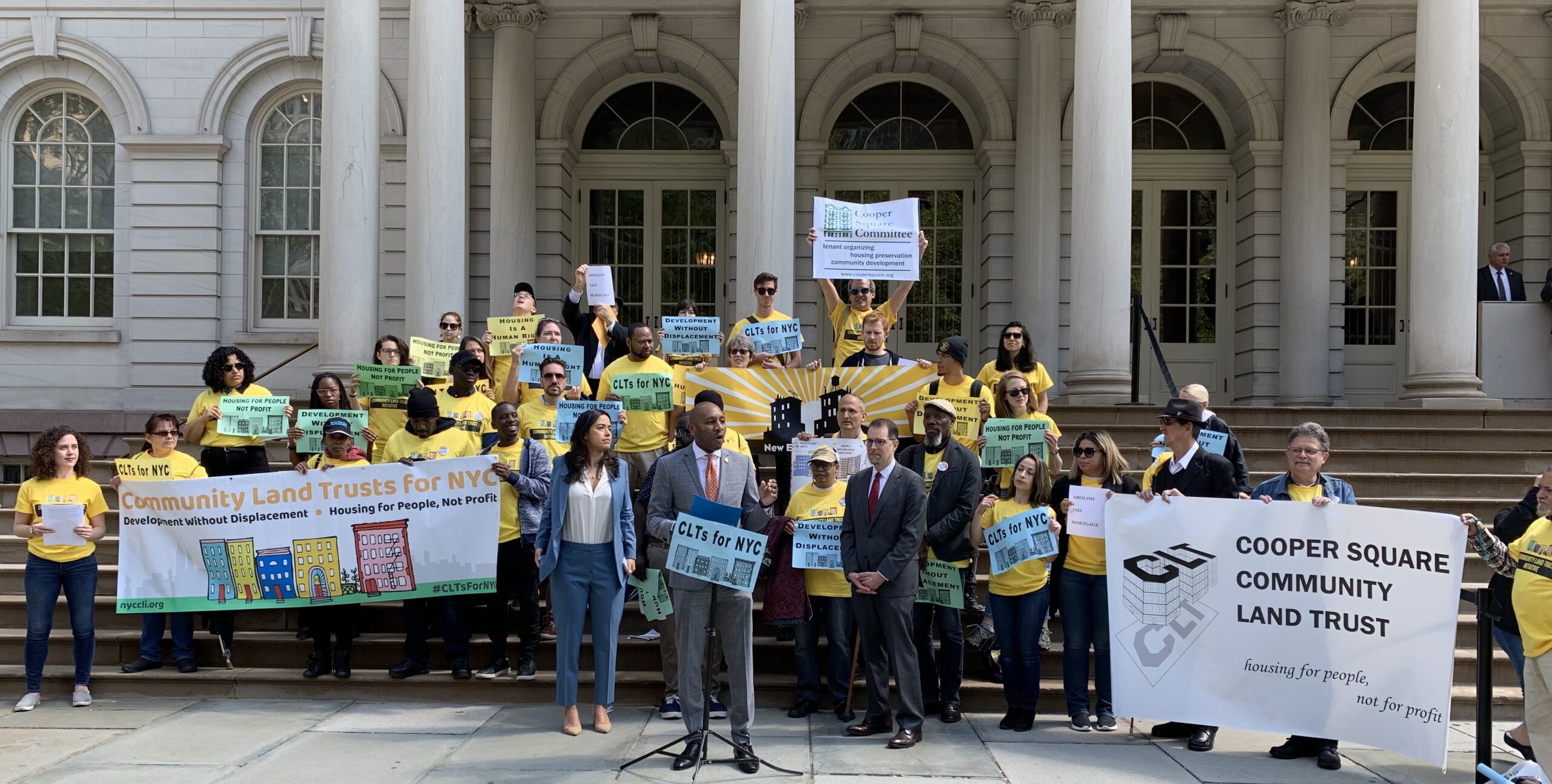
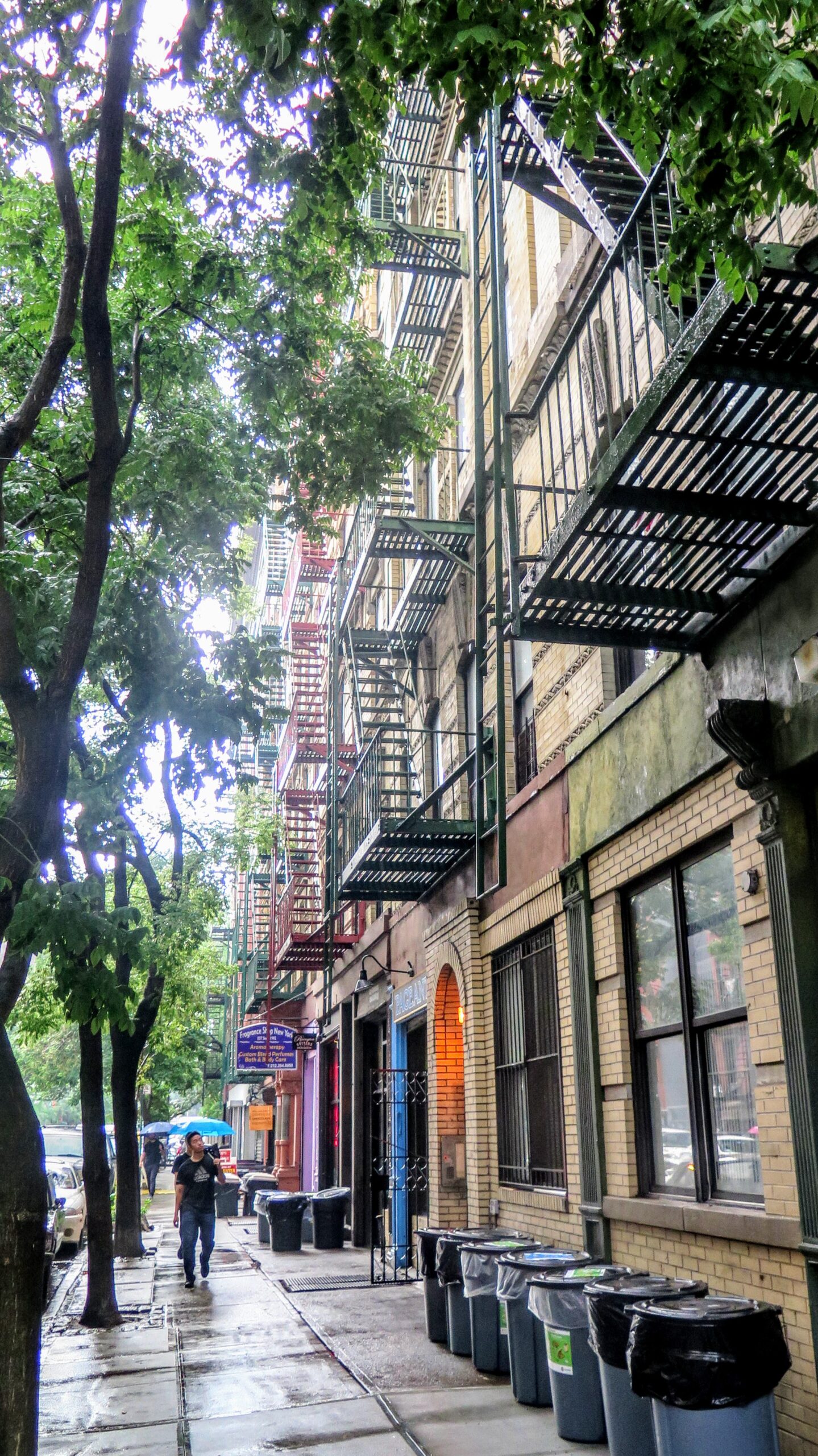
Currently, the MHA manages around 400 affordable housing units spread across 23 buildings. Despite being situated in a highly valued area, the CLT has effectively maintained housing affordability: 60% of all residences within its operational zone are priced well below market rates, catering to tenants whose incomes average around 50% of the region’s median. Rent is capped at less than 25% of the area’s median income, calculated by taking the regional average income, considering 25% of this figure, and ensuring rental rates are equal to or lower than this amount. Since 1991, this approach has kept rent increases minimal at just 3%, ensuring long-term residency stability and continued accessibility for future generations.
In addition to ensuring long-term affordable housing, the Cooper Square Committee tackles broader community issues beyond housing itself. It provides guidance during negotiations between residents and landlords to prevent excessive rent hikes, to promote improvements, and to avoid evictions. Additionally, the Committee develops cultural and recreational projects for the community. For instance, residents have collaborated to build a community center equipped with a gym and pool, to invest in repurposing buildings for cultural activities, and to initiate urban landscaping projects through artistic endeavors. Furthermore, ground-floor businesses are also selected based on their social impact and pay affordable rents.
The Cooper Square Community Land Trust has successfully survived decades, through a historic struggle for housing rights, and today ensures the well-being of hundreds of families with tenure security and affordable housing. Today, the Cooper Square CLT forms part of the city-wide New York City Community Land Initiative, a coalition of groups and individuals advocating in favor of community land trusts.
For those interested in learning more, on July 3, 2024, we will be hosting a talk by Cooper Square CLT Director Tom Angotti on Zoom in English and Portuguese: click here to sign up.
